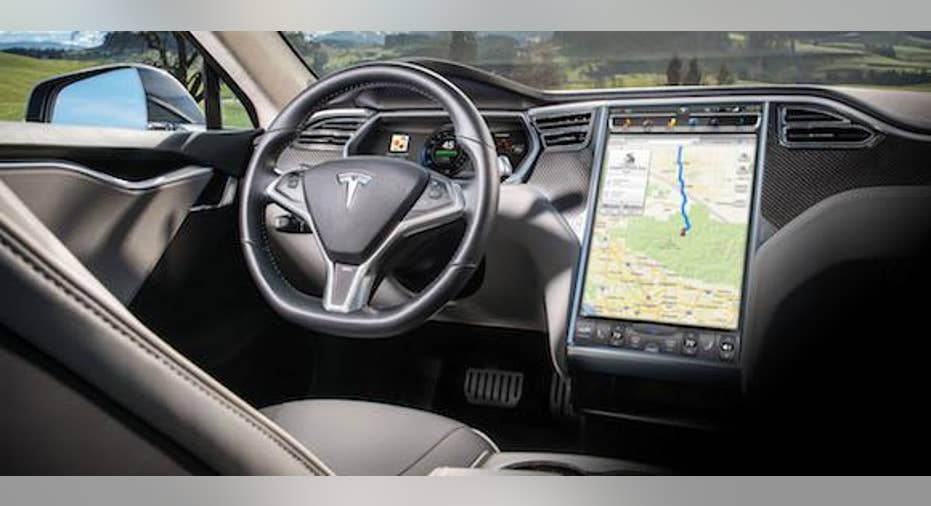Carmakers Could Save $35 Billion in 2022 by Doing This

Automakers are headed toward a series of technological revolutions. By 2040, electric vehicles are expected to account for about 35% of new global car sales. And by 2050, nearly every new car on the road will befully autonomous, according IHS Automotive.
But before carmakers can reach either of these milestones, they'll need to implement an easy way to fix software problems in their vehicles, and update them with new features when they want. They'll do this by using a technology that's been around forseveral years called over-the-air (OTA) updates, which allows manufactures to change a vehicle's on-board software remotely.
And according a report published by IHSAutomotive late last year, carmakers could save $35 billion in 2022 just by using OTA updates, up from $2.7 billion in savings last year.
Why OTA saves automakers money IHS said that carmakers will be able to reduce the cost of warranties, increase the completion rate of software-related recalls (some customers never come in, so their updates can't be done), and allow companies to enhance vehicle features.
Image source: Tesla.
Tesla Motors (NASDAQ: TSLA) has already done a number of these OTA updates, including its most recent upgrade for its self-parking and summon feature. In TSLA's case, the updates allowed the cars to drive themselves in certain conditions on the road, as well as in and out of garages or parking spaces.
Colin Bird, senior analyst of software, apps and services at IHS Automotive, said in the report that,"Software expertise is becoming a core competency for auto OEMs and it starts with a good software platform strategy, followed by strong software development and execution."
The biggest OTA updates will involve maps, apps, infotainment, telematics, and electronic control updates. The average new car has about 200 million lines of programming code, and much of that code can be tweaked later to improve safety, update maps, or add entirely new features.
Major carmakers are already making big pushes in this direction. Last year, BMW started using OTA updates for its navigation systems, and some of its vehicles have built-in SIM cards for cellular connections.
So, instead of waiting for owners to physically bring their vehicles to a dealership, Tesla and BMW can update certain electronic systems quickly and cheaply. ABI Research says that in 2015, four major car OEMs set aside $20 billion for warranty-related changes. About one-third of those changes could have been made via OTA updates, which would have saved them $6 billion.
From optional to standard There are two reasons why automakers are pursuing this technology right now. The first is competition.
Tesla has set a new standard on OTA updates, and other carmakers are starting to see that the benefits outweigh any of the drawbacks. General Motors was an early adopter of OTA telematics updates through its OnStar system, but it wasn't until Tesla started tweaking the performance of its vehicles through such software updates that carmakers (and car owners) realized OTA's full potential.
The technology will be become more commonplace aselectric vehicles become more popular. Electric cars can more easily have their performance enhanced via software updates than internal combustion engines can, and new software can make battery packs even more efficient.
Secondly, as cars become even more centered on electrical systems and software, they'll be more vulnerable to bugs and hacking. Automakers have no choice but to implement OTA update systems in order toprotect cars and those who ride in them. In all likelihood, updates will be needed so frequently that bringing those millions of cars into dealerships to perform them will rapidly become cost and time prohibitive.
Image source: Jeep.
ABI noted that Fiat Chrysler's 1.4 million car recall last year -- initiated by a hacking vulnerability -- could have been handled more easily and safely via OTA updates than by the method Chrysler ended up using: sending USB drives to car owners.
"This method, in place of an OTA update, increased security risk, the plausibility of owner identification, and the inability to ensure that the patch was done and done correctly," wrote ABI in a press release.
So while most major automakers are just starting to dabble in this technology, it's soon going to become a bedrock of how cars' features and safety recalls are implemented. It'll help make our vehicles better than ever before, and save carmakers a ton of money at the same time.
The article Carmakers Could Save $35 Billion in 2022 by Doing This originally appeared on Fool.com.
Chris Neiger has no position in any stocks mentioned. The Motley Fool owns shares of and recommends Tesla Motors. The Motley Fool recommends BMW and General Motors. Try any of our Foolish newsletter services free for 30 days. We Fools may not all hold the same opinions, but we all believe that considering a diverse range of insights makes us better investors. The Motley Fool has a disclosure policy.
Copyright 1995 - 2016 The Motley Fool, LLC. All rights reserved. The Motley Fool has a disclosure policy.



















